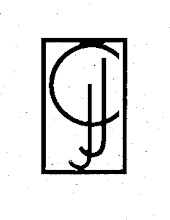 As I wrote earlier about our Blue Jays, they returned to our feeders this Autumn after a long summer hiatus. Or perhaps, more correctly, a new batch of young Jays had discovered our feeders, for they seemed new to the world and their feathers had neither found their proper place on their bodies nor reached the saturated blues that prompt their name. Their little head crests were usually resting flat when they were feeding, meaning they were comfortable there and not on high alert.
As I wrote earlier about our Blue Jays, they returned to our feeders this Autumn after a long summer hiatus. Or perhaps, more correctly, a new batch of young Jays had discovered our feeders, for they seemed new to the world and their feathers had neither found their proper place on their bodies nor reached the saturated blues that prompt their name. Their little head crests were usually resting flat when they were feeding, meaning they were comfortable there and not on high alert.I can’t say with certainty how many Blue Jays we’ve been watching, but three of them hang together in our yard—all about the same age, all jibbery-jabbering with one another wherever they go. When I tell people about them, the first response I hear is, “Jays are mean.”
Well, I haven’t seen it. In fact, I’ve seen our three little ones intimidated by other smaller birds at the feeders, or else stand their ground without flinching, but they’ve never bullied anyone else away as do the sparrows. There are studies that bear this out. (Of course I did a little research.) Only about 1% of Jays in the studies showed any kind of random aggressiveness—stealing eggs from other birds’ nests, attacking other birds, eating other birds and their offspring.
I turned to an older refere
 nce. While The Visitor was here, she bought me a reproduction of the 1904 Field Book of Wild Birds and Their Music by F. Schuyler Mathews. It contains black-and-white drawings of songbirds PLUS piano notation of the songs. I realize the Internet provides audio clips of birdsong, but for me, the notation makes it easier for identification. Some songs are too similar for me to hear the distinguishing characteristics; with notation, it’s obvious. I looked up Blue Jays in this century-old guide to find the birds categorized, basically, as mean. So I don’t know if Blue Jays used to be mean and have evolved into kinder, gentler creatures, or if their bad reputation is merely myth. I chose to follow our little trio’s comings-and-goings with no expectations of behavior—no pigeon-holing, as it were.
nce. While The Visitor was here, she bought me a reproduction of the 1904 Field Book of Wild Birds and Their Music by F. Schuyler Mathews. It contains black-and-white drawings of songbirds PLUS piano notation of the songs. I realize the Internet provides audio clips of birdsong, but for me, the notation makes it easier for identification. Some songs are too similar for me to hear the distinguishing characteristics; with notation, it’s obvious. I looked up Blue Jays in this century-old guide to find the birds categorized, basically, as mean. So I don’t know if Blue Jays used to be mean and have evolved into kinder, gentler creatures, or if their bad reputation is merely myth. I chose to follow our little trio’s comings-and-goings with no expectations of behavior—no pigeon-holing, as it were.One afternoon as I sat in our backyard, the trio flew into a tree and bush next door. They took turns squawking that well-known Jay cry. At first I thought they were pursuing something—or being pursued. Then I started laughing because they were SO LOUD and SO INCESSANT that it sounded like a contest. Which Jay’s cries were the loudest, the longest, the most frequent? They upped the ante with each new shriek.
Then a car pulled up into the parking area near them, windows down and some kind of hybrid hip-hop-pop music blaring. I was irritated because I expected the trio to scare and move on.
Instead, the Jays stopped squawking and stayed put. The driver turned off the engine but not the radio. More irritation on my part. What the heck was that driver up to? Either silence the car and get out of it, or go away.

Then I heard it. The trio started vocalizing again. This time, though, two of the birds sang a note similar to the squawk but at a deeper, fuller pitch sustained at a moderate volume. They sang together, alternating repetition of the note sometimes once, sometimes twice in a measured cadence. And above this percussive alto flow sang the third bird in a soprano tune of six notes. They were actually harmonizing! I was so astonished I didn’t have the presence of mind to record the concert.
I’ve read that Jays can mimic other birds’ melodies, but that’s not what my little trio was doing. They were riffing off one another, inspired perhaps by the hybrid hip-hop-pop. They were creating their own syncopated, chord-embellished composition.
This little concert is now one of the wonders of my world—no less special than the ancient pyramids or the Grand Canyon. It could have been the opening to one of those old Coca-Cola commercials:
“I’d like to buy the world a home and furnish it with love,
Grow apple trees and honey bees, and snow white turtle doves.
I’d like to teach the world to sing in perfect harmony …”
In an era of distraction and dissonance, we do well to cherish harmony wherever we find it.
[Top illustration by Josh Brill; other illustrations by Charlie Harper.]



No comments:
Post a Comment